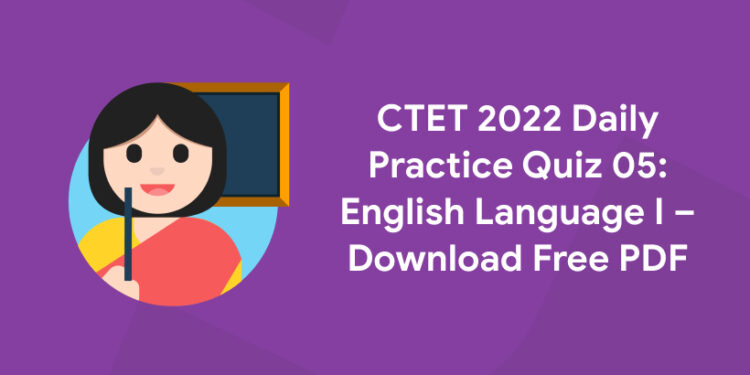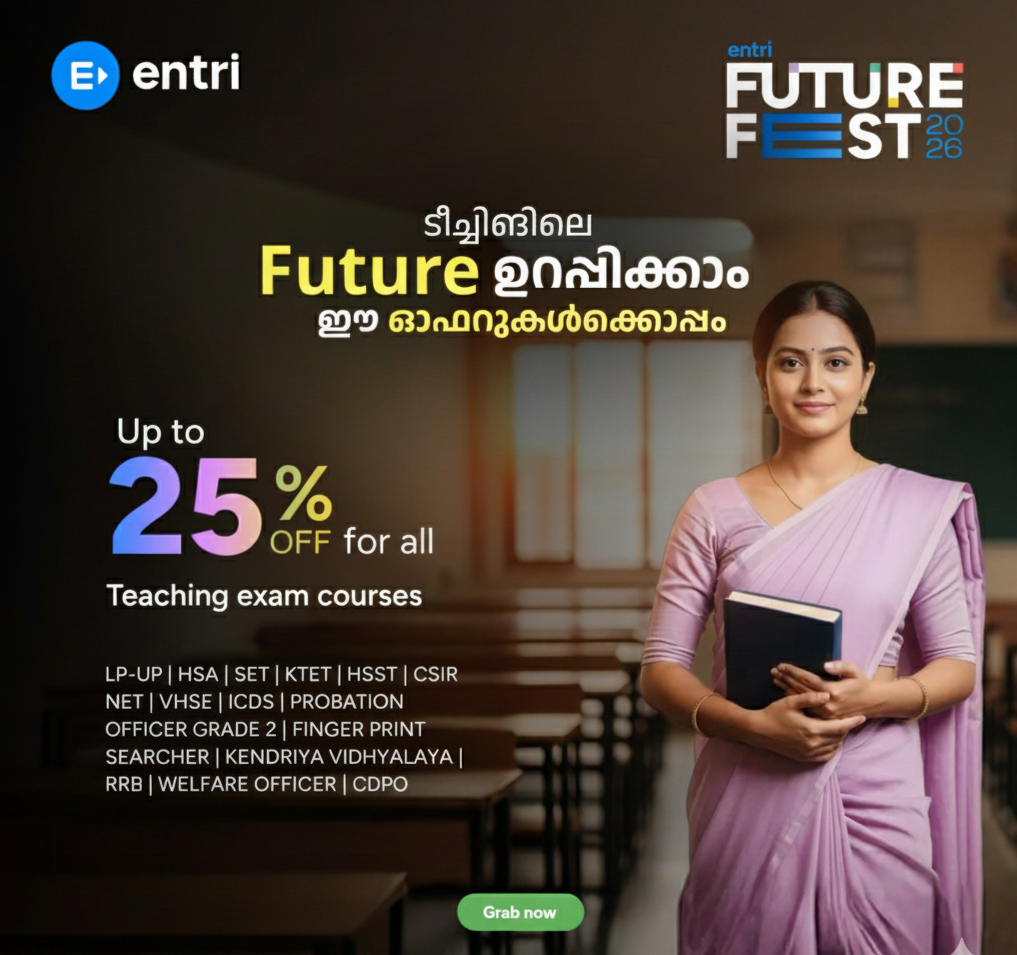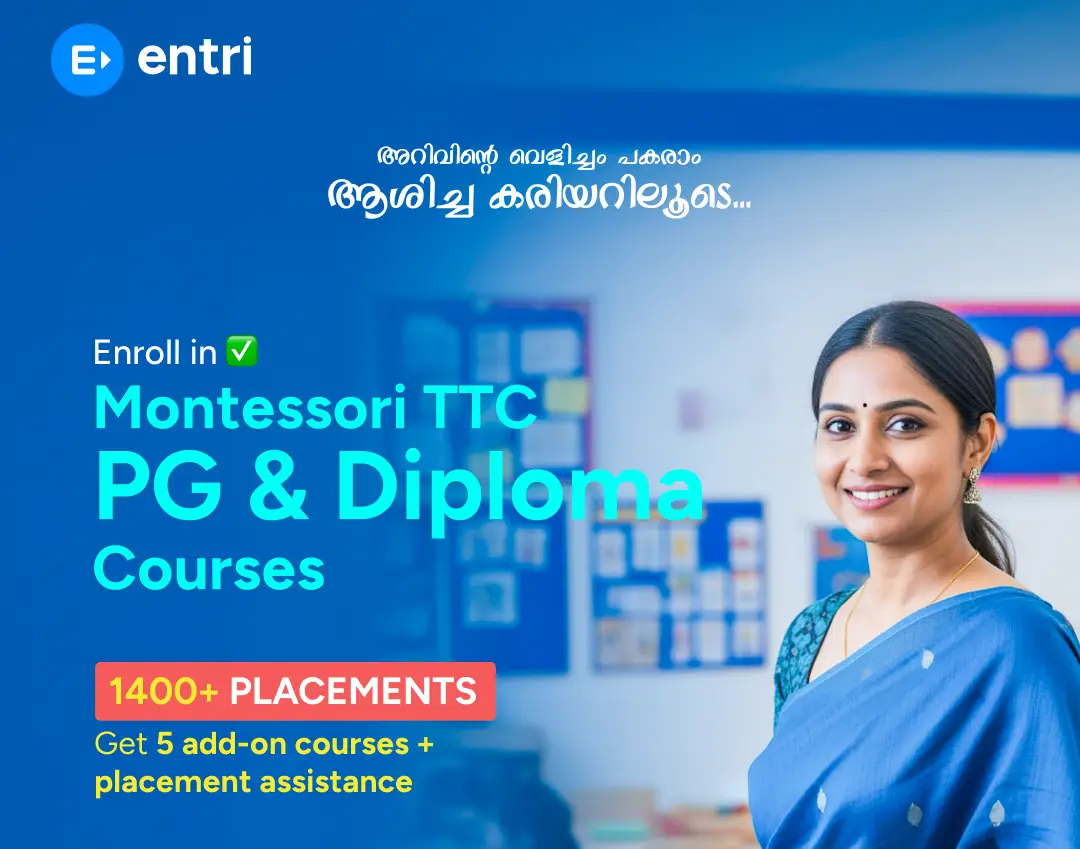CTET (Central Teacher Eligibility Test) is conducted every year to check the eligibility of teachers for primary and upper primary classes. The 16th edition of the Central Teacher Eligibility Test will be conducted in online mode this time.
If you are a TET exam aspirant, daily rank booster quizzes will help you to know your strength and weak areas. You will be able to attend exam confidently. They are sure shot way to achieve success. So Practice daily to achieve your dream job!
Join our Telegram channel to get latest CTET Study Materials 2022
CTET 2022 Daily Practice Quiz 05: English Language
1. Read the passage given below and then answer the questions given below the passage.
Since the beginning of human civilization, science and technology have progressed in a continuous process. For the first humans fire must have been an exciting all singing and dancing new technology. But to this day we are continuing research to fully answer the question, what is fire? And the search for new knowledge is based on rational thinking which is fundamental for progress and for making new discoveries. I doubt whether there was (or now is) a civilization that reached a high level of achievement without simultaneously nurturing science and technology and employing the rational characteristic of culture of science. After all, we are Homo sapiens, the species characterized by an enlarged brain capacity. Science is an education process that allows the educated and creative minds to question, experiment or observe in an attempt to find answers, and then try to identify a set of unifying principles, concepts, and laws that embrace all phenomena of nature.
The aim is to better understand our universe and gain new knowledge that will enlighten humanity by unveiling mysteries of how nature works. In the process we may make new discoveries and inventions that change the way we think and/or create new technologies that transform our society. The sharp division of science into pure and applied branches is not natural. Some managers of science believe in this division and wish to emphasize only “what is relevant” for the prosperity of the society. But that is not the way science works, as scientists themselves in their quest for new knowledge do not know what is relevant. And if they knew ahead of time it would not be new knowledge. Scientific research is not manageable in the usual sense of the word. Most science \& technology advances are governed by a structure of a connected triad – basic research, technology development, and the involvement of society. In this cycle, both pure and applied sciences become an integral part of a successful endeavor. Take the case of cloning, a current subject of significant relevance to the definition of species. Cloning began as a laboratory experiment on the genetic material of our cells, DNA. But these experimental achievements would not have been possible without scientific research and advances over a half century of development in many areas: the discovery of the genetic code, molecular structure of DNA, recombinant DNA, and other related studies.
Moreover, a century of development of new techniques and tools provided the means: x-ray crystallography, polymerase chain reaction (PCR), genetic engineering, as well as computer data processing. Then came the first successful cloning of a higher organism – Dolly, the sheep – an act that transformed laboratory research into an enterprise with possible benefits to human medicine. But the third element of the triad, the society, must now be involved to develop a full perspective of the moral, ethical, and religious implications of cloning. With rational thinking, the benefits of cloning and other developments, such as stem cell research, to society will undoubtedly feed back to the support of basic research, and the cycle of the triad continues. Cycles of this type ultimately lead to the development of new concepts and new tools or techniques. Some historians of science make a division between the two. The late influential historian and philosopher of science, Thomas Kuhn, favored concept-driven research as a paradigm over tool-driven research. Although I am not a historian, I find from my own experience as a scientist that this distinction is not as sharp as Kuhn would have it. In fact new tools and techniques drive scientific research as much as new concepts, and both are part of the progress of science.
A) Which of the following is true regarding concept driven research and tool driven research?
A) The author has found that basic research supported by technological developments contributes the most to advancement in human civilization.
B) The author pursues only tool driven research and hence looks down on concept driven research.
- A is true, B is false
- B is true, A is false
- Both A and B are false
- Both A and B are true
B. Which of these is the third element of the ‘triad’ as mentioned in the passage?
- Technological development
- Basic research
- Involvement of Society
- Governmental regulations
C. Which part of the following sentence contains an error?
Some managers of science (a)/ believe in this division (b)/ and wish to emphasize only “what is relevant” (c)/ for the prosperity in the society.(d)
- a
- b
- C
- d
D. Which part of speech is the italic word in the following sentence?
After all, we are Homo sapiens, the species characterized by an enlarged brain capacity.
- Adjective
- Adverb
- Preposition
- Pronoun
E. Which of the following words is correct for the phrase ‘all singing and dancing’ as given in the passage?
- Musical performance.
- Ritual
- Civilization
- Full of vitality
F. Which does basic research supported by technological developments contribute to according to the author?
- Advancement of human society.
- Endorses the separation between concept driven research and tool driven research.
- The author pursues only tool driven research and hence looks down on concept driven research.
- All of the above
G. Which word is the opposite in the meaning to the word ‘rational’ as used in the passage?
- Traditional
- National
- Sensational
- Fallacious
H. Which word is similar in meaning to the word ‘nurturing’ as used in the passage?
- Nutrition
- Helping or encouraging development
- Watering
- Cherishing
I. What does the author mainly want to discuss through the passage?
- Science and technology are at war with each other.
- Societal acceptance is not important for science.
- Basic research can progress without technological development.
- Science and technology together can lead to advancement of human civilization.
2. Read the poem given below and answer the questions by selecting the most appropriate options.
A black cat among roses,
Phlox, lilac-misted under a first-quarter moon,
The sweet smells of Heliotrope and night Scented stock.
The garden is very still,
It is dazed with moonlight,
Contented with perfume,
Dreaming the opium
Dream of its folded poppies.
Firefly lights open and vanish
High as the tip buds of the golden glow
Low as the sweet alyssum flowers at my feet.
Then you come,
And you are quiet like the garden,
And white like the alyssum flowers,
And beautiful as the silent
sparks of the fireflies.
Ah, beloved, do you see those orange lilies?
They knew my mother,
But who belonging to me will they know
When I am gone.
A. In the first stanza of the extract, the black cat is:
- creeping among the roses
- drinking milk
- sleeping and dreaming
- none of these
B. Name the figure of speech used in ‘And you are quiet like the garden’.
- Metaphor
- Personification
- Simile
- Hyperbole
C. Which of the following adjectives does not apply to the listeners?
- Quiet
- Beautiful
- White
- Selfish
D. Which literary device is used in the expression, ‘High as the tip buds of the golden glow’?
- Metaphor
- Oxymoron
- Hyperbole
- Simile
E. The expression ‘Phlox lilac-misted’ refers to:
- the type of plant
- place where flowers are kept
- place where animals are kept
- none of these
F. Which of the following statements is not true?
- The speaker draws the listeners attention to the orange lilies.
- All the plants in the garden are sleeping, except ladies delight.
- Everything is dazed with moonlight and contented with perfume.
- The speaker is leaving the legacy that her mother did.
3. The term ‘second language’ means
- The language that one learns right after he has learnt his first language
- The language other than the mother-tongue that one uses for public communication
- The language other than the mother-tongue that one uses for his/her library language
- None of the above
4. Post-reading tasks are meant for :
- explaining the grammatical rules in the text
- assessing the learning and connecting it to real-life situations
- giving the meaning of difficult words
- introducing the main idea of the text
5. Identify the best way to complete the given sentence. Mary, a young teacher, believes in personalized learning because she thinks that
- all learners must learn on their own.
- children must enjoy their learning.
- every person must be exposed to learning.
- Every learner is unique and needs to be given a chance to develop to the best of their ability.
6. Children’s oral language development forms an important foundation for learning literacy. Which of the following classroom practices enable oral languages development?
- Memorizing and reciting poems individually or in a chorus
- Chorus reading of a story in the textbook along with the teacher
- Practicing the words in a chorus
- Participating in role-plays on favorite stories
7. With reference to language, consider the following:
I. It is used as a tool for thinking
II. It is used for communication
III. It is innate
IV. It is learned Which of the above statements are correct?
- I and II
- II, III and IV
- I, II and IV
- II and IV
8. In syntax, the interest is focused on the
- Vocabulary
- Arrangement of words
- Grammar
- Sounds
9. Arti Saxena, an English teacher of class \(V\), always tries to ensure that her learners should pronounce the word correctly and spell it correctly. Which aspect of vocabulary development does she try to develop in her learners?
- Semantic
- Phonetic
- Phonetic cum graphic
- Graphic
10. We use real objects to teach young learners new words because
- it helps learners associate words with objects they see in real life
- it helps in teaching the correct spelling of words
- we can teach vocabulary only through real objects
- young learners are not capable of abstract thinking
11. In learning English as a second language committing an error is:
- a problem that needs to be rectified immediately.
- an indicator of learning.
- a hindrance that hampers learning.
- a problem.
12. A test which evaluates a person’s ability to communicate well in real life:
- Placement test
- Diagnostic test
- Proficiency test
- Achievement test
13. Cummins \& Swains, in their book Bilingualism in Education, differentiates between ——— and ——–.
- BICS & CALP
- Preparation and Presentation
- Practice and Evaluation
- All of the above
14. Answer the following question by selecting the correct option. The full form of CALL is
- Cognitive Achievers’ Language Lab
- Computer-Assisted Language Learning
- Comprehensive Achievers’ Language Learning
- None of the above
15. Which language ability would you be testing if you asked students to write a few sentences about their family?
- Grammar
- Vocabulary
- Writing D
- All of these
Join our Telegram channel to get latest CTET Study Materials 2022
CTET Daily Practice Quiz 2022 with Solution – Download Free PDF
Download the pdf from the below link to attempt quiz on Environmental Studies! Click below for more questions with solution!
CTET Daily Practice Quiz 2022 – Day 5 – Download Free PDF for Solution












